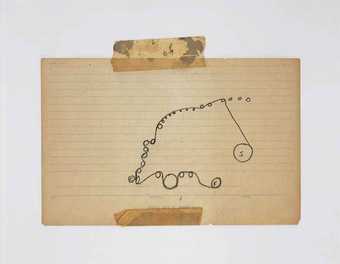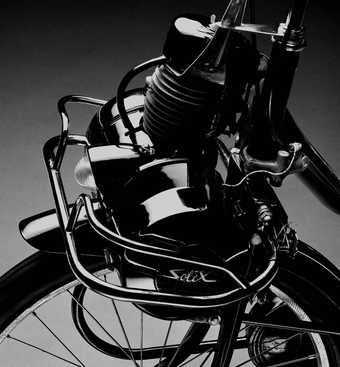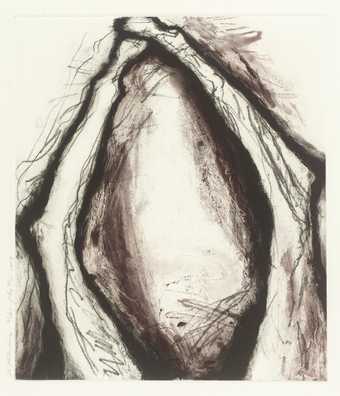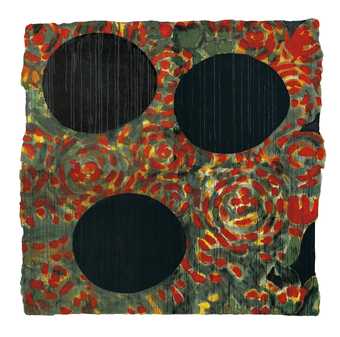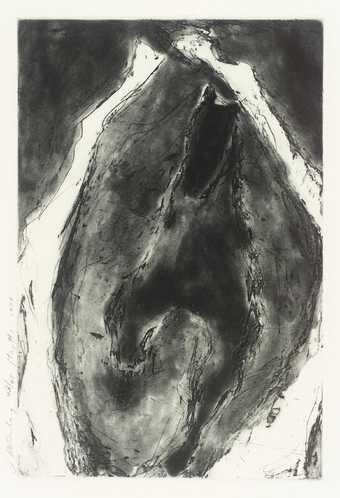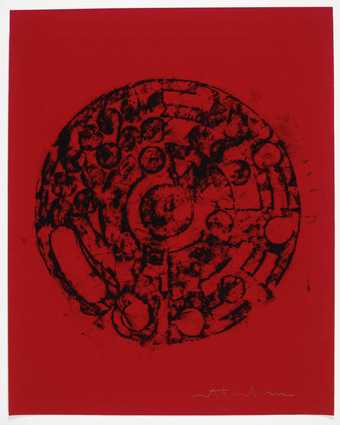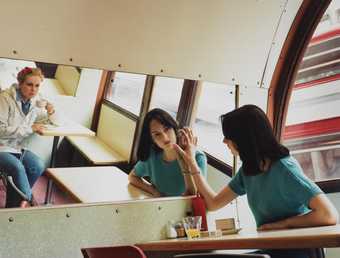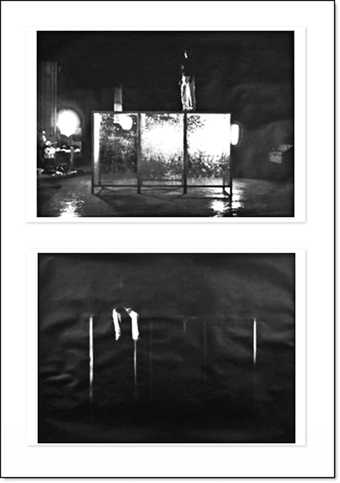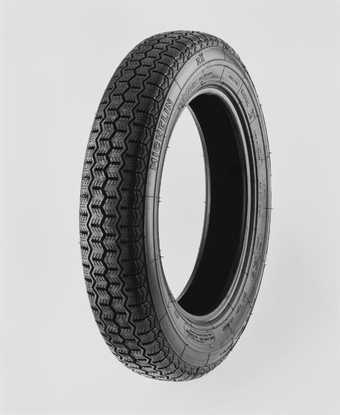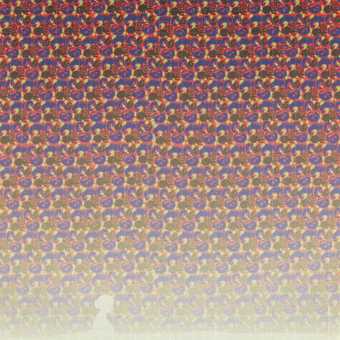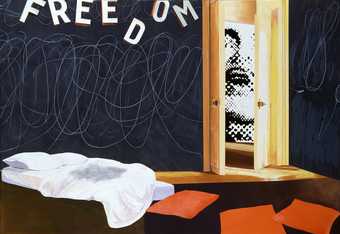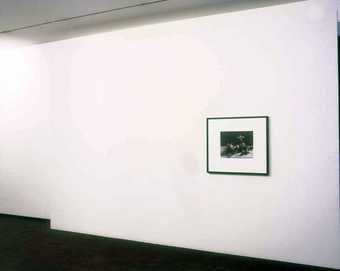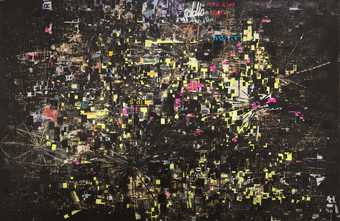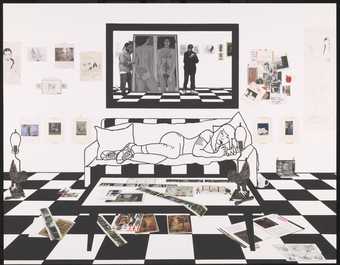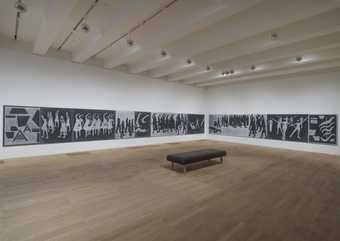
Not on display
- Artist
- Mark Bradford born 1961
- Medium
- Printed paper on canvas
- Dimensions
- Image: 2601 × 3740 mm
- Collection
- Tate
- Acquisition
- Purchased with funds provided by the American Patrons of Tate, Omar and Hind Alghanim, Poju and Anita Zabludowicz and a private donor 2011
- Reference
- T13449
Summary
May Heaven Preserve You from Dangers and Assassins is a large, mural-sized canvas with the remains of advertising flyers collaged across its surface. It is one of a number of works made by the artist since 2009, characterised by a palette of black, white, silver and grey tones, which feature what he calls ‘merchant posters’ (there is no official name for these often hand drawn notices). These advertising flyers are taken from Bradford’s neighbourhood in Los Angeles, where they are typically affixed to the hoardings surrounding abandoned and derelict buildings. May Heaven Preserve You from Dangers and Assassins specifically features flyers selling pest control services (the word ‘BUGS is repeated across the central portion of the canvas). Like others in this body of work, such as When It Stops Snowing, which is made from advertisements that sell the facility to ‘receive calls on your cell phone from jail’, the work carries an underlying statement about the social circumstances of the target audience for these ads. Bradford is interested in the manner in which the changing notices indicate the altered circumstances that the local population experiences, and the way in which the urban fabric can be ‘read’ through this layering of signs. Although these works have a surface similarity with the work of twentieth-century European ‘affichiste’ artists such as Raymond Hains (1926–2005) and Jacques Villeglé (born 1926, see for example Jazzmen 1961, Tate T07619), Bradford is less concerned with the proliferation of commercial imagery than with the socio-political clues that his materials contain.
The artist’s training at Cal Arts in California in the late 1990s was one critical of painterly tradition and he has deliberately set out to create paintings without the use of paint, using instead the materials of his local environment and personal experience. Bradford first began to incorporate images of local signage into his work in 2002. He has likened his process to ‘those tagged up, repainted, tagged up, sanded, and repainted walls you pass everyday in the street’, as well as to the handmade posters he appropriates for his canvases ‘which act as memory of things pasted and things past. You can peel away the layers of papers and it’s like reading the streets through signs.’ (Quoted in Kara Walker, ‘Remembrance of Things Past(ed)’, in Bounce: Mark Bradford & Glenn Kaino, exhibition catalogue, REDCAT, Los Angeles 2004, p.24).
May Heaven Preserve You from Dangers and Assassins embodies the artist’s innovative approach to painting through the process of collage and the distressing of the found materials he applies to his canvas support. Bradford’s method involves soaking, bleaching, tearing and sanding the paper of the flyers, emphasising its physicality as a key formal element. As a result, fragmented words and phrases appear and disappear across the surface of his works. May Heaven Preserve You from Dangers and Assassins involves a process of caulking over parts of the text on the copies he has made of the flyers with a commercial product, before laying black paper on the surface to create what initially appears to be an all black painting with Braille-like raised text. Once dry, he sands the surface with a commercial belt sander to create a black and white surface with a metallic sheen. The original text is thus hidden, obscured and then partly revealed again; this process of layering acts as a metaphor for social invisibility determined by race and class.
May Heaven Preserve You from Dangers and Assassins is typical of Bradford’s work, both formally and in its concern with the living conditions of the Black and Latino occupants of downtown Los Angeles, which has been left largely vacant for decades but remains the work and business area for the poorer inhabitants of the city. Now characterised by shops selling cheap mass-produced goods, the area is still largely unoccupied after the working day and thus has a dual life from busy commercial centre during the day to desolate non-residential zone at night. Another work Los Moscos 2004 (Tate L02673), similarly deals with the urban situation of Los Angeles – the title, which translates from Spanish as ‘The Flies’, refers to the name colloquially given to the Latino workers who wait on the streets for work. Like May Heaven Preserve You from Dangers and Assassins, it includes materials found by the artist on the streets around his Los Angeles studio, as well as papers used in hairdressing (Bradford’s mother ran a hair salon where he worked for many years and many of his works continue to reference the social and material culture of the salon).
The actual text of the flyers which Bradford uses in his work is itself important. May Heaven Preserve You From Dangers and Assassins features the repeated word ‘BUGS’ and Bradford has said of this: ‘I used “bugs” because it’s creepy and also refers to a crisis globally and talks about migration, economics etc. I use a pop art way of reproducing socially loaded text.’ (Email to Tate curator Jessica Morgan, November 2010.) The title of the work is a quotation from the traditional Italian story by Carlo Collodi (1826–1890) of ‘Pinocchio’, a character frequently referred to by Bradford in his examination of social identities.
Further reading
Mark Bradford, exhibition catalogue, Sikkema Jenkins and Co., New York 2006.
Mark Bradford, exhibition catalogue, Wexner Center for the Arts, Ohio 2010.
Mark Bradford: Merchant Posters, exhibition catalogue, Aspen Art Museum 2010.
Jessica Morgan
November 2010
Does this text contain inaccurate information or language that you feel we should improve or change? We would like to hear from you.
Explore
- abstraction(8,615)
-
- non-representational(6,161)
-
- gestural(891)
- monochromatic(722)
- text(1,043)
- townscapes / man-made features(21,603)
-
- signage(467)
- formal qualities(12,454)
-
- defacement(257)
- texture(466)
- decay(254)
- desolation(135)
- reading, writing, printed matter(5,159)
-
- poster(874)
- USA, California(112)
- lifestyle and culture(10,247)
-
- advertising(536)
- urban environment(303)
- class(262)
- contemporary society(640)
- displacement(24)
- migration(20)
- race(381)
You might like
-
Christopher Williams Untitled (Study in Black/Vietnam) Douglas M. Parker Studio, Los Angeles, California March 20, 2006
2006 -
Susan Rothenberg Untitled (May No. 2)
1979 -
Donald Sultan Black Eggs and Roses May 22 2000
2000 -
Susan Rothenberg Untitled (May No. 1)
1979 -
Matt Mullican Cosmology
1988 -
Hannah Starkey Untitled - May 1997
1997 -
Scott Myles David Standing 4th May 2004 and David Sitting 4th May 2004
2004 -
Pae White Untitled
2013 -
Dexter Dalwood Situationist Apartment May ‘68
2001 -
Christopher Williams Bouquet, for Bas Jan Ader and Christopher D’Arcangelo
1991 -
Mark Bradford Los Moscos
2004 -
Frances Stark Behold Man!
2013 -
Silke Otto-Knapp A series of images following one from the other
2018

